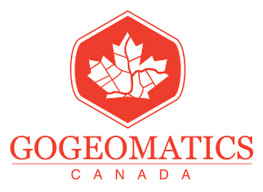
- B.C. tech companies shutdown after Government investigation
- Mapping Canada’s wildlife problem
- The legal polluters of Burrard Inlet
- Innovative LiDAR Study to Enhance Snowpack Measurement in Alberta
- Addressing Canada’s Housing Supply Challenges with Ratio.City’s Platform
- Saskatchewan’s Digital Agriculture: The Future of Crop Management
- Nominations Open for New Awards at Canada’s National Geomatics Expo
B.C. tech companies shutdown after Government investigation
The Ministry of Innovation, Science and Industry has ordered the closure of two B.C.-based tech companies, Bluvec Technologies Inc. and Pegauni Technology Inc., after a national security review. Bluvec, known for its drone detection system with military applications, was also previously sued for stealing source code from Skycope Technologies. The decision, based on advice from Canada’s security and intelligence community, underscores the government’s stance on protecting national security while welcoming foreign investment.
Read the full article here.
Mapping Canada’s wildlife problem
World Animal Protection Canada has launched an interactive tool to track captive wildlife incidents across Canada, highlighting systemic issues in under-regulated roadside zoos. The tool documents escapes, attacks, and disease outbreaks, providing the most comprehensive database to date. The organization urges Canadians to report local wildlife issues and supports Bill S-15 to enhance wildlife protection laws. They emphasize the need for federal and provincial collaboration on animal welfare and public safety.
Read the full article here and check out the interactive tool here.

The legal polluters of Burrard Inlet
Centuries of industrial activity have severely polluted Burrard Inlet, impacting the Tsleil-Waututh Nation and preventing shellfish harvesting and swimming. The Tsleil-Waututh are leading cleanup efforts, but ongoing pollution remains a challenge. The Narwhal’s investigation reveals that 21 facilities, including refineries and chemical plants, are permitted by the BC government to discharge contaminants into the inlet. These permits often conflict with new water quality objectives, such as prohibiting oil and grease, which are still allowed in significant quantities.
Read the full article here.

Saskatchewan’s Digital Agriculture: The Future of Crop Management
Dr. Steve Shirtliffe from the University of Saskatchewan aims to map every agricultural field in Western Canada using digital technology. This tool will help optimize crop production by analyzing data from satellites, drones, and sensors. The project will assist farmers, plant breeders, and policymakers in making informed decisions. The goal is to boost yields, enhance plant breeding, and improve crop management by addressing challenges like soil salinity and weed control. This innovation could position Saskatchewan as a global leader in precision agriculture.
Read the full article here.

Addressing Canada’s Housing Supply Challenges with Ratio.City’s Platform
Ratio.City has been selected as a semifinalist in CMHC’s Housing Supply Challenge, allowing them to expand their innovative platform nationally to tackle Canada’s housing crisis. Their tools, developed in CMHC Round 2, streamline housing development by aligning municipal planners and developers through shared data. This platform reduces delays, risks, and costs by providing comprehensive planning data, facilitating faster, more informed decisions. With new funding, Ratio.City plans to scale its operations, automate data collection, and enhance collaboration to increase housing supply across Canada.
Read the full article here.

Innovative LiDAR Study to Enhance Snowpack Measurement in Alberta
The Government of Alberta, in collaboration with the University of Lethbridge, is using LiDAR technology to measure snowpack in southern Alberta more accurately. This initiative aims to improve water management by providing detailed snow depth data, critical for managing reservoirs and rivers during spring melt. LiDAR offers more spatially precise data compared to traditional methods, enhancing hydrological models and water forecasts. Initial findings indicate varied snowpack levels between watersheds, contributing to better-informed water resource policies.
Read the full article here.
Nominations Open for New Awards at Canada’s National Geomatics Expo
Canada’s National Geomatics Expo is introducing a new awards program at the Calgary event (October 28-30, 2024). The program aims to honour standout achievements in geomatics, with a focus on leadership, innovation, and forward thinking. Award categories include Game Changer, Innovation, Thought Leadership, Public Sector Focus, and Strategy and Leadership. The GoGeomatics advisory committee and industry experts will decide the winners. Nominations are open via an online Google Form, and sponsorship opportunities are available.
Learn more here.





Be the first to comment